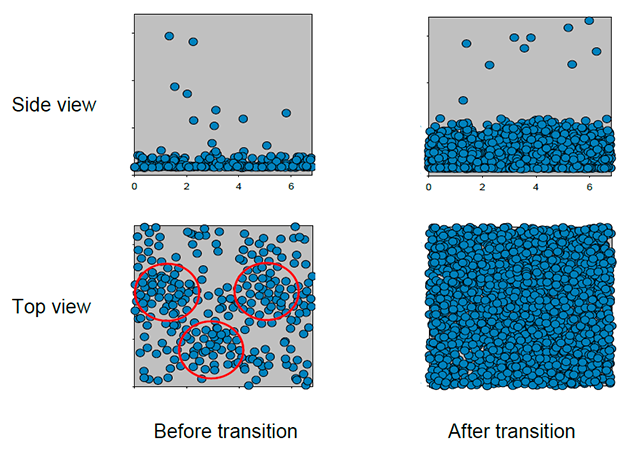Abstract
The speaker has carried out simulations and experiments of adsorption of a number of adsorbates on weak and strong substrates to investigate the effects of temperature on the transitions from non-wetting/pre-wetting to wetting, and condensation/cavitation. The transition from non-wetting to pre-wetting and wetting depends on the wetting temperature (TW) and the adsorbate roughening temperature (TR).
When the wetting temperature, TW, is greater than the roughening temperature, the transition passes through a pre-wetting stage, prior to wetting at temperatures greater than the critical pre-wetting temperature, Tc,pw. The change in the structure of the adsorbed layers in the pre-wetting region is usually referred to in the literature as a “thin-to-thick” transition, but the speaker and his research team's detailed study shows that the physics of this transition is a change in the adsorption mechanism from clustering of mobile clusters (rather than thin film) to molecular layering to form a thick adsorbed film. The snapshots in the following figure show molecular configurations of adsorbate just before and just after the pre-wetting transition for a moderately strong surface, such as Polytetrafluoroethylene (PTFE). Another example of clustering to thick film transition is adsorption of water on a hydrophobic surface grafted with either functional groups or nano-crevices.
 |
When the wetting temperature is less than the roughening temperature for strong surfaces, such as carbon black, the transition proceeds by layer-by-layer wetting and the wetting temperature of higher layers approaches the roughening temperature. The speaker and his research team's study suggests that the temperature of the non-wetting/wetting transition is characterized by the ratio between the heat of adsorption and the heat of sublimation (or condensation).
The practical implication of the study with argon, xenon, CO2, NH3 and H2O for adsorbent characterization will be discussed in the lecture.
About the speaker
Prof. Duong D. Do received his BE and PhD from the University of Queensland in 1976 and 1980 respectively. After conducting his research fellowship at the California Institute of Technology (CALTECH) for a period of time, he joined the University of Queensland in 1981 and is now a Professor of Chemical Engineering there.
Prof. Do is an international authority in adsorption, modelling, applied mathematics and computer simulation. He is the editorial board member of four journals, including Adsorption, Adsorption Science & Technology, Journal of Non-equilibrium Thermodynamics and Frontiers of Chemical Science and Engineering (formerly known as Frontiers of Chemical Engineering in China). He is also a prolific researcher himself, with over 400 journal publications in high impact journals, more than 50 book chapters, over 300 conference papers, giving more than 50 plenary/keynote lectures at international conferences and published 5 books including 2 textbooks in applied mathematics and chemical engineering.
Prof. Do has been recognized as a fellow of the International Adsorption Society (2016). He is also honored with the Esso Award of Excellence in Chemical Engineering (1999). Besides, he has been a member of the American Institute of Chemical Engineers since 1980.
|


